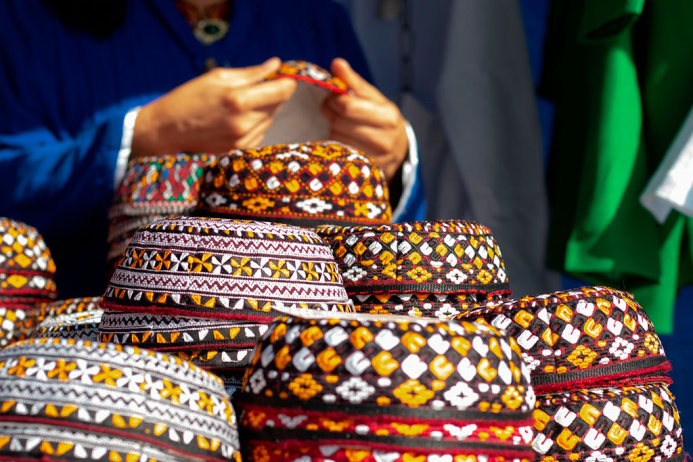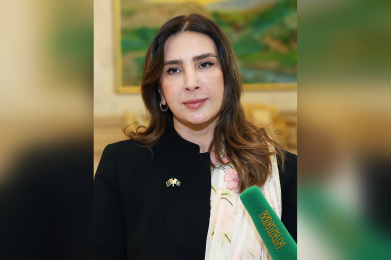The Turkmen takhya: both a headdress and a symbol
17.09.2020 | 20:10 |Takhya is a traditional skullcap which possesses Turkmen national motives. It was worn and is worn by all people of Central Asia. But in the territory of Turkmenistan headdresses of many ethnic groups differed in their size, style, and the main thing is in the ornament, though at first sight it seems that all of them are identical.
The variety of forms of headdresses, their strict functional purpose combined with traditional character and bright decorative effect, symbolical and magic sense of the ornament testify to the antiquity of their origin. By its form takhya is divided into round, oval, low and high. They were sewn and are sewn from various fabrics, both expensive - velvet, cloth, silk, and simple - sateen, chintz, but more often from beautiful and expensive material «keteni». Thus, takhya is necessarily decorated by embroidery.
The basic function of takhya is protection of head from sun, and also takhya is worn as an ornament for head. But there is also other mission: once these multi-coloured hats had a protective magic value. People believed in ancient times that takhya preserves the owner against troubles, protects from malefice, illnesses and harm. According to ancient customs, old takhya should not be given to other person or be thrown out.

In the Turkmen national costume there is an accurate differentiation of maiden and female headdresses. Girls and girls-brides put on takhya embroidered by colour silk threads, and brides – takhya with silver suspension brackets and small silver dome «gupba». Soft takhya with rare quilting from a linen fabric put on the boy or the girl in some days after birth. For old men a hat was sewn from white coarse calico.
Takhya underlined blossoming beauty of the girl, and stylish colours on the maiden takhya symbolised beauty and virginity. Takhya spoke about the maiden honour, it was norms of national ethics - absence of takhya was equated to chastity infringement. The girl put takhya so that hair braided in four plaits, were visible. Having married, the women could not put on colourful takhya anymore.
At first sight it seems that takhya is simple enough in its form and ornament and it is easy for making, but it is not so at all. The process of making takhya is very labour-consuming. In order to embroider a hat of small size, it is necessary to put a lot of patience, diligence and time. For example, the wide silk band «jakhek», framing takhya, is spun simultaneously by two skilled workers, thus in work all fingers of hands are occupied with them. At making patterns and ornament the skilled worker so densely fills with embroidery the surface of a skullcap and do it so skilfully that with an unarmed eye sometimes it was impossible to make out what colour its basis is.
 Patterns on takhya remain today same as it were many centuries back. But it is not because it is difficult to invent new ones, it is that for long history of the skilled worker have brought a decor to perfection, and the ornament became original. In general Turkmen takhya always had an embroidery arrangement, but the ornament and techniques of embroidery were various. Skilfully embroidered takhya is possible to be ranked as original works of art with good reason.
Patterns on takhya remain today same as it were many centuries back. But it is not because it is difficult to invent new ones, it is that for long history of the skilled worker have brought a decor to perfection, and the ornament became original. In general Turkmen takhya always had an embroidery arrangement, but the ornament and techniques of embroidery were various. Skilfully embroidered takhya is possible to be ranked as original works of art with good reason.
Man's takhya always differed from female one with decorative simplicity and restraint that is quite explainable. However, the special sense was ciphered in its ornament. On all surface man's takhya in some circles pass strips from small triangles closely adjoining with each other. They symbolise unity of the Turkmen dzhigits, ready to rise shoulder to shoulder to reject pressure of the enemy.

Today age-old takhya endures rebirth, it is extremely claimed, and it is worn by present students and schoolboys. Takhya still gives clothes national colour, and is the sample of high art of embroidery and remains a most symbolically significant element in the youth costume.
Batyr SEYIDOV











